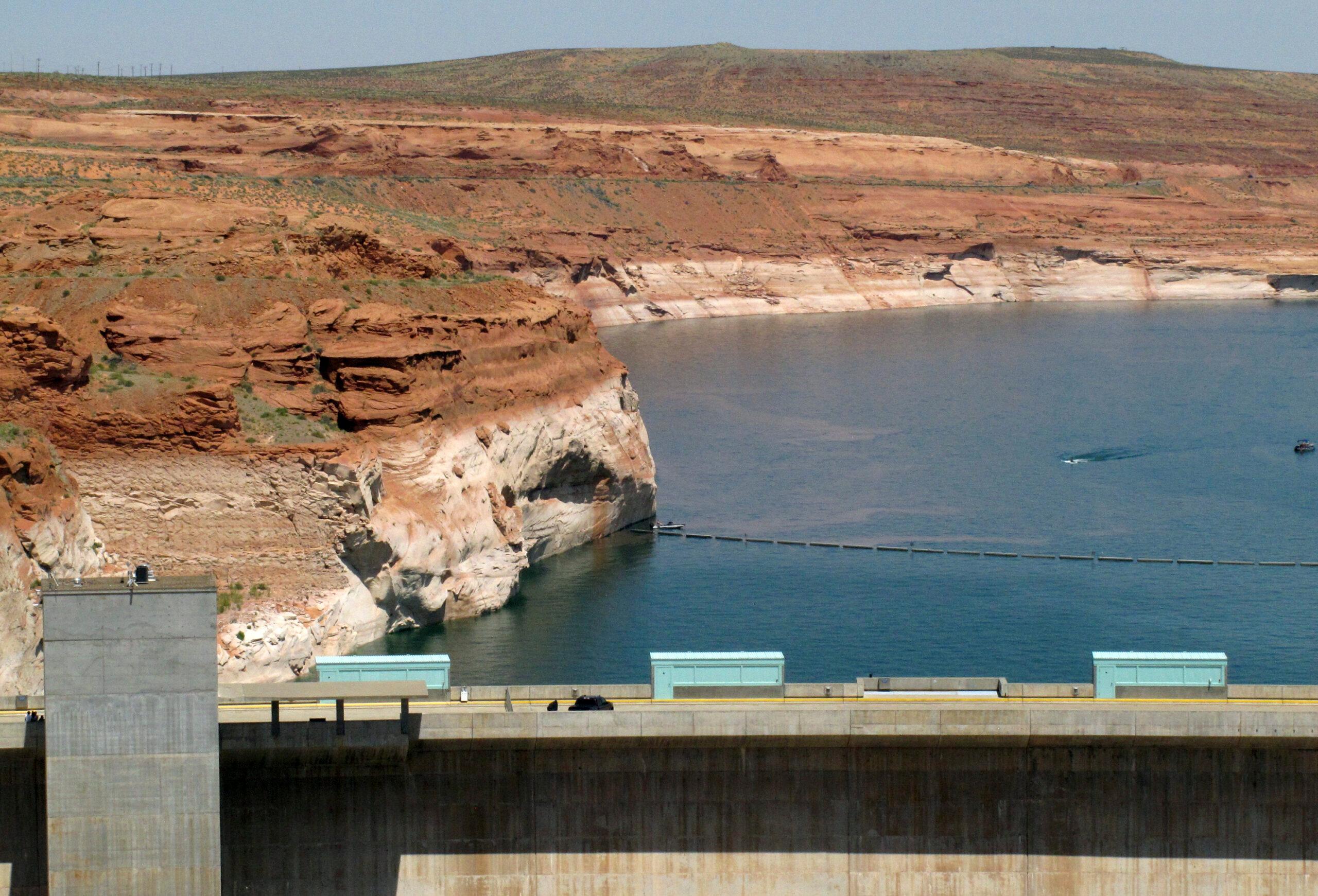
The federal government in 2021 made the emergency decision to send water from reservoirs in Colorado and other states to Lake Powell on the Utah-Arizona border, which had dropped to its lowest level on record. The water was needed to keep Powell, the second-largest reservoir in the U.S., from hitting a point where it could no longer produce hydropower for millions of people in the West.
Colorado and the other states upstream of the Colorado River are working out a way to keep Lake Powell’s levels above 3,525 feet and avoid the need for similar federal emergency action in the future. If the reservoir drops below that level, it could threaten power generation and other water infrastructure and jeopardize water-sharing agreements between states.
At the time of publication, Lake Powell was sitting at only 3,529 feet — only four feet above this important threshold. The latest projections from the U.S. Bureau of Reclamation show there’s a chance Powell could dip below this critical level by the fall of 2022 if conditions remain historically dry.
A 20-year megadrought and a hotter climate, fueled primarily by greenhouse gas emissions from fossil fuels, has contributed to shrinking water supplies in the Colorado River. If Lake Powell’s levels continue to dwindle, it could set off a court battle between the seven states and the 40 million people that rely on the river.
To avoid that, the states that share the Colorado River agreed to the Congressionally approved 2019 Drought Contingency Plan. The agreement includes the provision that if Lake Powell is projected to possibly drop below 3,525 feet, the states upstream of the river will have a plan in place to send more water to Lake Powell. That plan will be updated annually depending on current drought conditions.
Rod Smith, an attorney with the U.S. Department of the Interior, said that when the drought contingency agreement was adopted, he thought the agency would have a “two-year runway” to create a draft framework on how the states could work to keep Lake Powell propped up. But a historically dry spring in 2021 accelerated the process, Smith said.
Smith presented the first part of the new drought plan last month, a framework meant to help guide states on creating a new reservoir operations drought plan each year to protect Powell. Changing information like snowpack numbers, stream flows and projected reservoir levels will be plugged into the framework to create a new yearly plan. Still, the framework itself will stay mostly unchanged year-to-year, Smith said.
Each annually-created drought response plan will help protect Lake Powell by strategically using Colorado River water stored in other reservoirs — Flaming Gorge on the Utah-Wyoming border, Navajo in New Mexico and Blue Mesa in Colorado.
Blue Mesa lost eight feet of water to save Lake Powell in 2021, and the reservoir — Colorado’s largest — hit its lowest level on record by the end of the year. Because no drought response plan was yet in place, the water was sent from Colorado to Lake Powell through federal emergency action at a difficult time. The reservoir’s marina had to close early, and boaters, anglers and other people who used the lake for recreation were given just a 10 days notice to remove their boats from the water.
The drought response plan is designed to protect Lake Powell while accommodating how the three other reservoirs are used and managed, which includes the environmental and recreational impacts of water withdrawals from upstream reservoirs, Smith said. A draft of the plan will be released in the spring.
After the framework on the annual drought response plan is approved, state water managers will use it along with updated water data to decide how to respond if water levels in Lake Powell appear likely to fall below that critical level in 2022-2023. That response plan could be finalized by April and updated each year if Lake Powell still needs protection.









